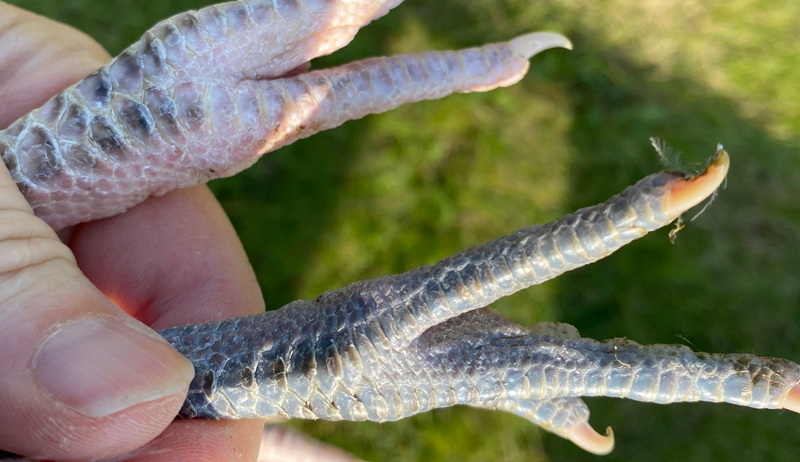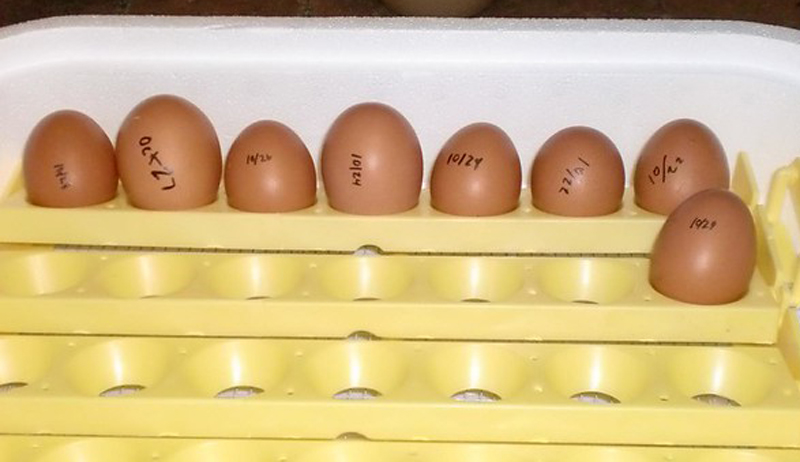
One of the nice things about writing for Hobby Farms—and about having a reputation locally as the Chicken Lady—is that people reach out to me with their chicken-keeping questions. Every couple of days, I receive a message on our farm’s Facebook page or in my town’s chicken-owner group asking for help or clarification.
This spring, my primary care physician was removing a tick from my chest when she started posing questions about chicks.
It’s all good. I do my best to answer. The chicken-keeping questions that stump me, I pass along to my university poultry-science contacts. They’re usually swamped, so I tackle pretty much any inquiry that comes along.
Here are five questions I’ve received over the five months and my responses to them.

Why Do My Hens Have Different-Colored Legs?
The color of a chicken’s shank depends on the breed and variety of the chicken.
Buff Plymouth Rocks, for example, have rich golden-yellow legs while Buff Orpingtons have pinkish-white legs. Black Jersey Giants have black legs while White Jersey Giants tend toward willow-colored legs.
It’s all a matter of color genetics. If you are wondering what color your bird’s shanks should be, check with your breed national group. Or check the American Poultry Association‘s Standard of Perfection.
When Can My Baby Chicks Spend the Night Outside?
This is, of course, one of the more dire chicken-keeping questions. Chickens are homeothermic. That means they produce and give off heat to maintain their body temperature.
Feathers help chickens regulate the amount of heat they retain, so do not put your chicks outside until they are fully feathered. For most breeds, chicks are fully feathered by the time they reach 6 to 8 weeks old.
Still, be alert to extreme temperatures, especially at night. Juveniles may not yet have learned how to perch, so provide your chicks with an elevated surface on which to sleep so they do not lose body heat to the ground.
Read more: Here are some tips for safely moving chicks outside without risking chill.
Is It Safe to Buy Hatching Eggs on EBay?
Many flock keepers sell fertile eggs on eBay. The advice I offer is caveat emptor: May the buyer beware. As with any eBay sale, you carry the burden of determining whether or not the seller is trustworthy and is offering a quality product.
Before placing a bid or using the “Buy It Now” feature, read the seller’s feedback to hear what previous customers have to say. You can always reach out to a seller with questions. They are not obligated to answer but those who are honest usually do.
Make sure you ask about refunds for poorly packed/shipped eggs. While purchasing fertilized eggs anywhere is no guarantee that they will indeed hatch, ensuring the eggs arrive intact is a matter of the seller’s proper packaging.
Confirm with the seller that they are indeed selling what was posted. I once purchased a dozen Chocolate Orpington eggs and ended up with a dozen Mottled Orpington eggs. That’s how Butters and Brioche joined our flock.
Lastly, remember that in order to ship hatching eggs across state lines, most states require that the sellers be certified by the National Poultry Improvement Plan (NPIP).

Can I Get Sick from My Birds?
Many poultry illnesses and parasites—like fowl pox, fowl typhoid and poultry lice—are strictly avian conditions that do not affect humans. However, there a couple of illnesses exist that are zoonotic—transferable from animal to human.
The best known of these is Salmonellosis, caused by the Salmonella bacteria. Salmonella can transfer to humans not just by contact with live poultry but also via contact with poultry litter, eggs, coops, cages, feeders, waterers… pretty much anything in the birds’ environment.
The Centers for Disease Control has very definitive guidelines on how to prevent the spread of Salmonella from your poultry flock to your family, including:
- Frequent washing of hands
- Not snuggling or hugging chickens
- Avoiding the handling of live poultry if you are immunocompromised or over the age of 65
Avian influenza (AI) is often a source of worry for flock keepers. AI was first detected in humans in 1997 in Hong Kong. There have been a number of outbreaks in the US, as recently as March 2017. But these were due to North American strains of the virus, not the dangerous Asian H5N1 and Asian H7N9 viruses, which have never been detected in the United States.
The CDC considers the risk of contracting North American AI to be low.
Read more: Keep these things in mind to keep your chickens (and you) free of salmonella.
How Can I Tell If an Egg Has Gone Bad?
This is one of the more common chicken-keeping questions I get. An egg that has started turning gives off several indicators of its decaying state.
First, it may start smelling off. This is especially true if there were unnoticed hairline fractures in the shell. These would have let in bacteria and, in turn, release an unpleasant odor.
Next, the egg’s interior may begin to turn color, usually a slate-blue, grey or black.
If your egg looks and smells normal, do the egg-float test. Place the egg in a container of water. If it floats, the albumin and yolk have contracted with age, allowing for more air to occupy the interior of the egg, causing it to float. These eggs, while not rotten, are no longer fresh enough to eat.




